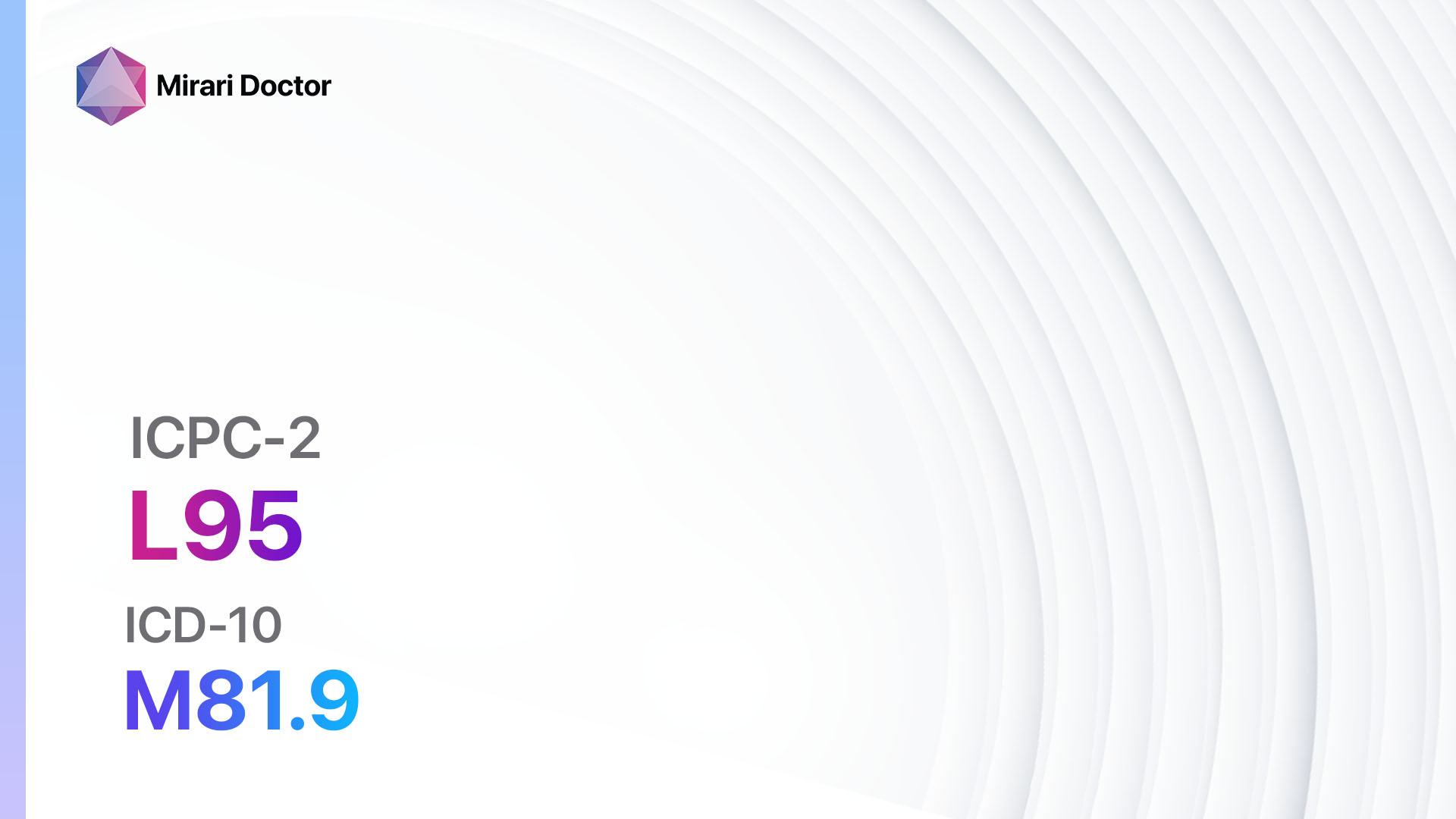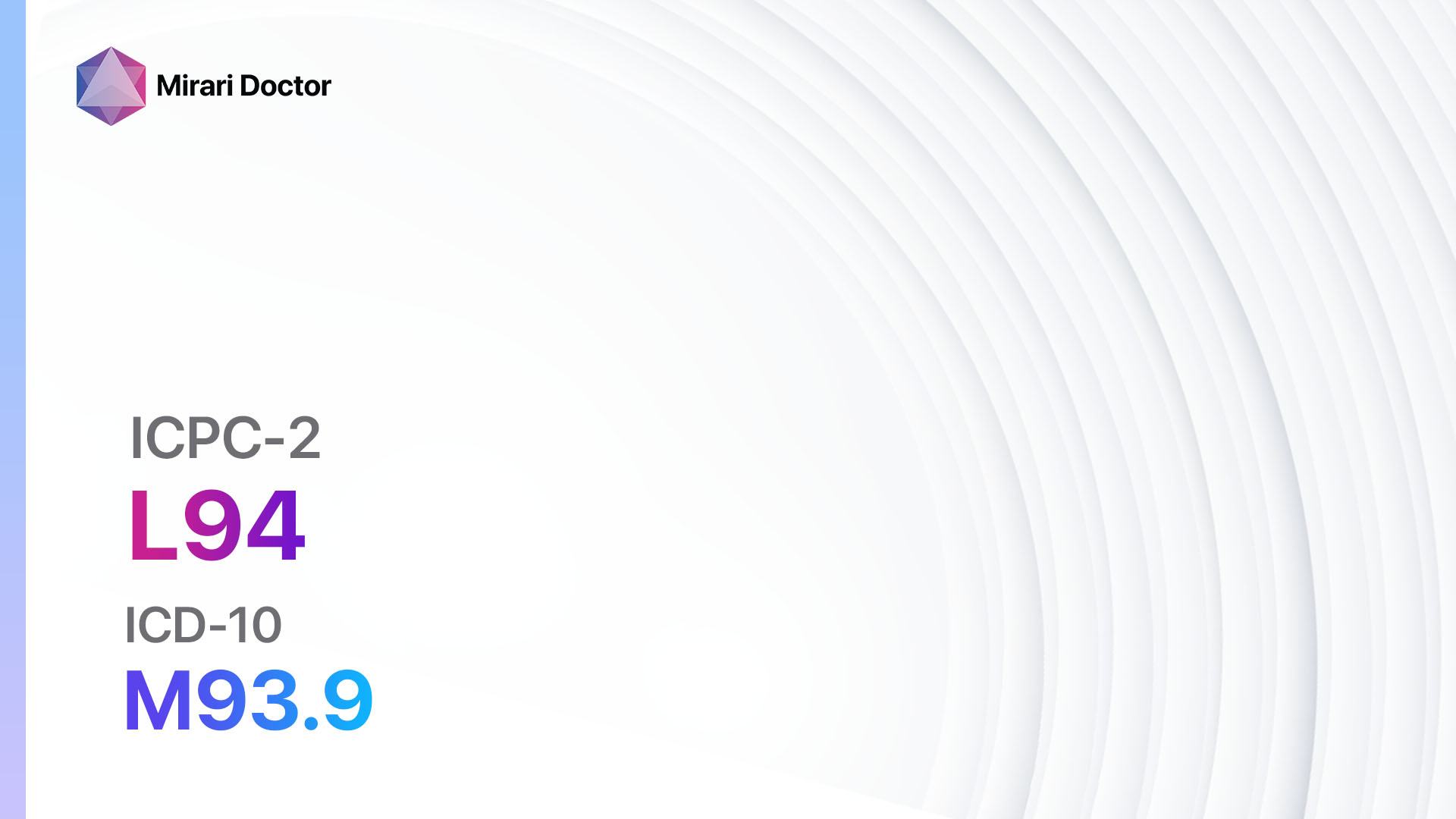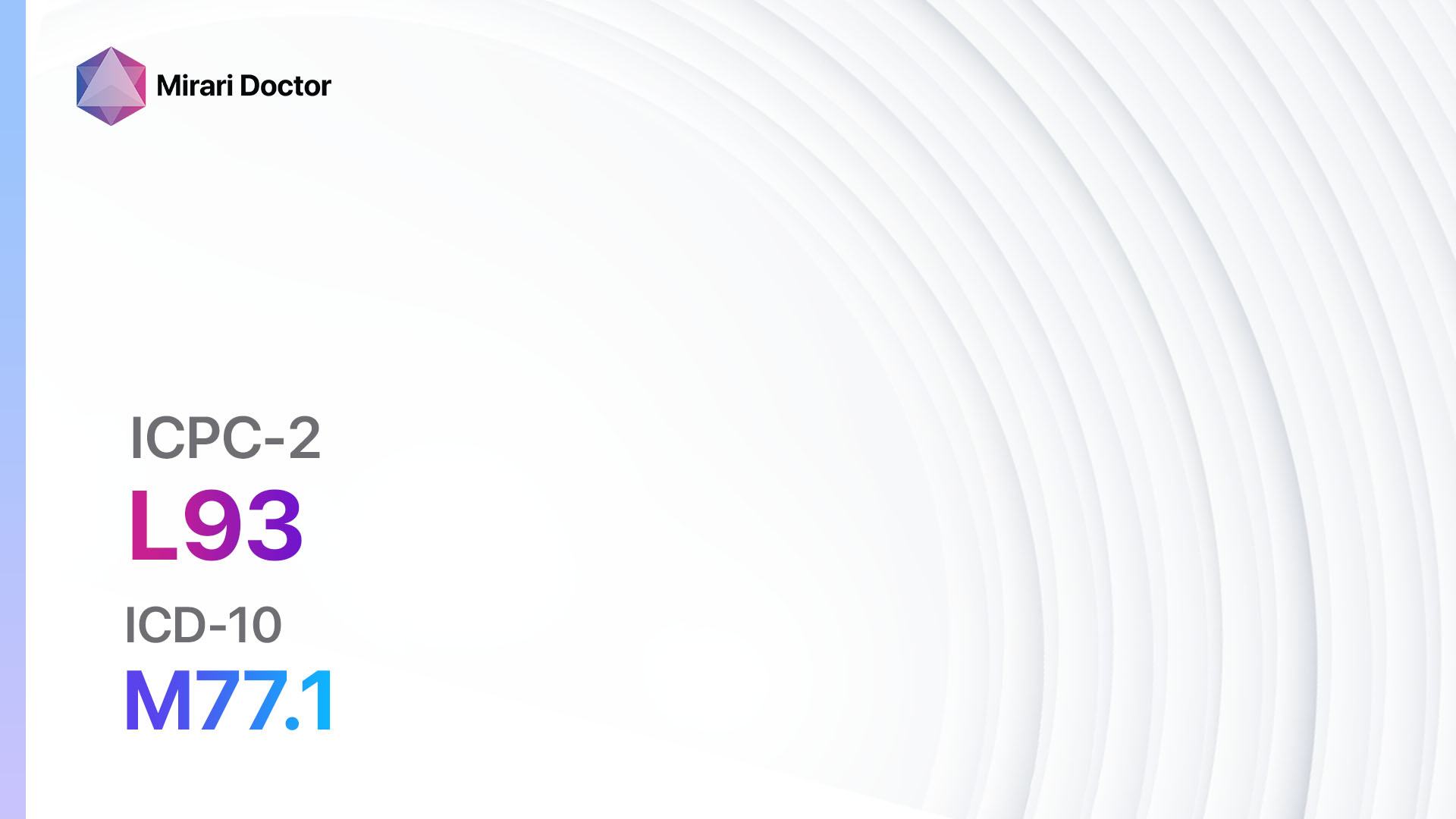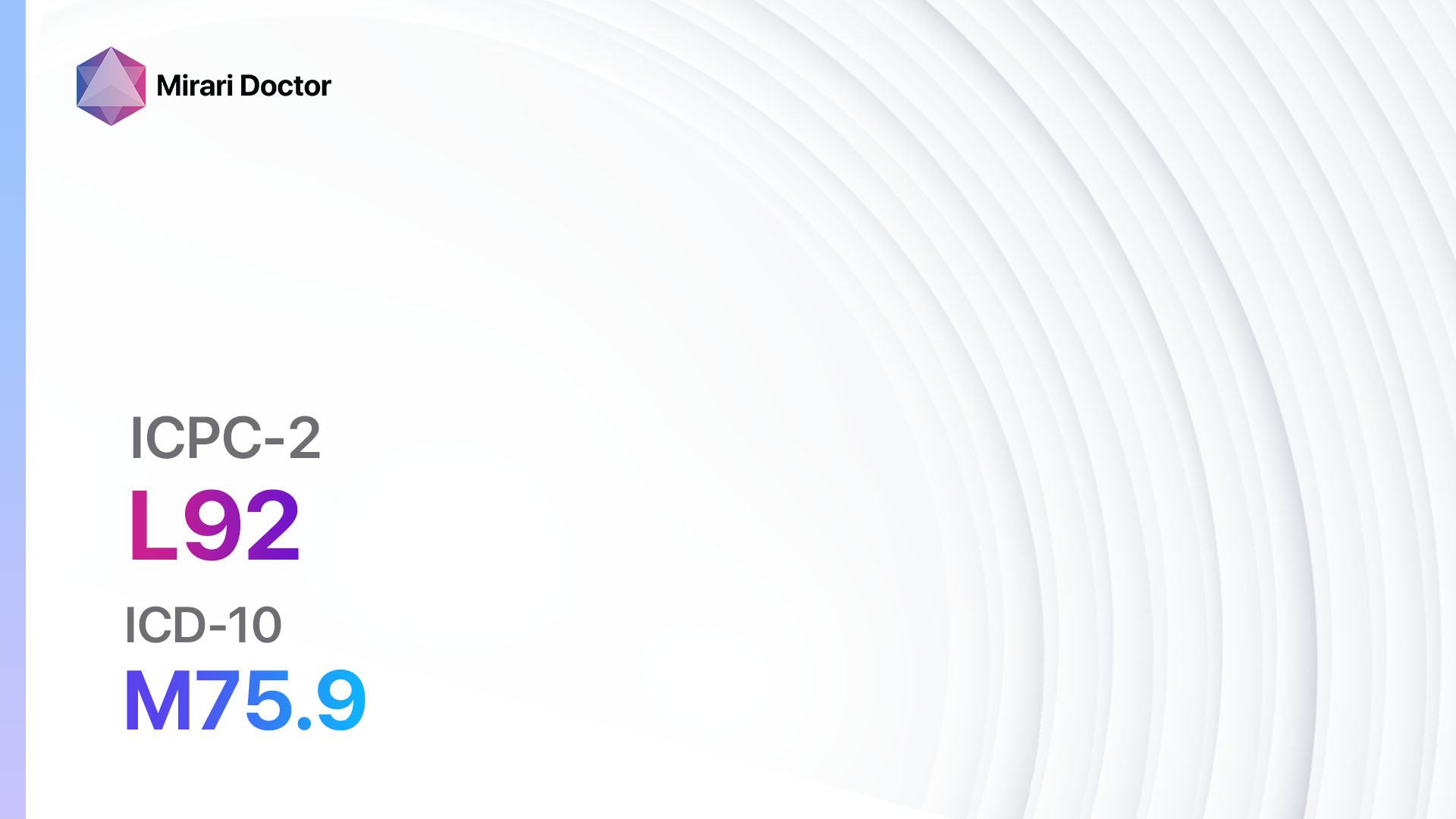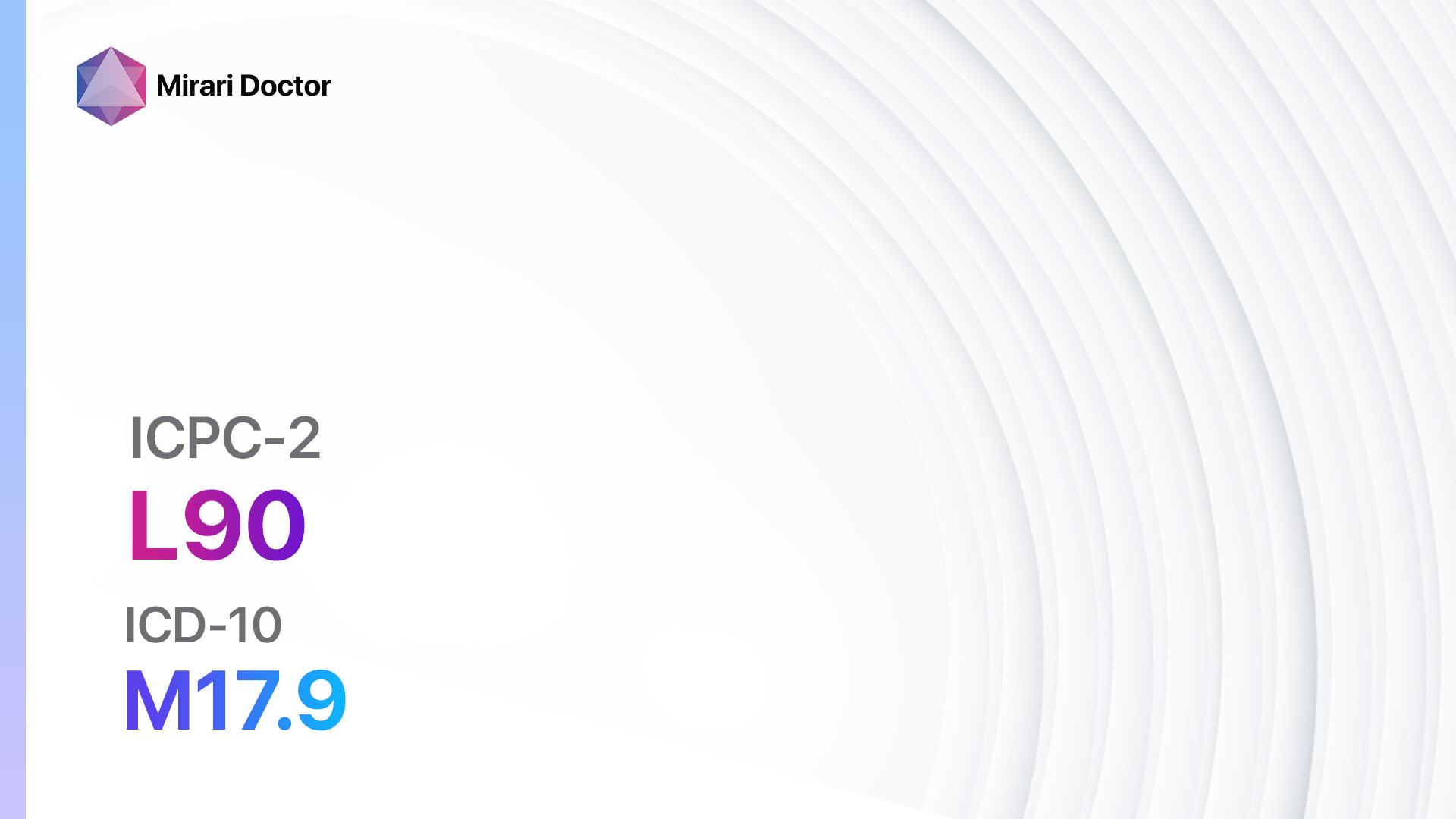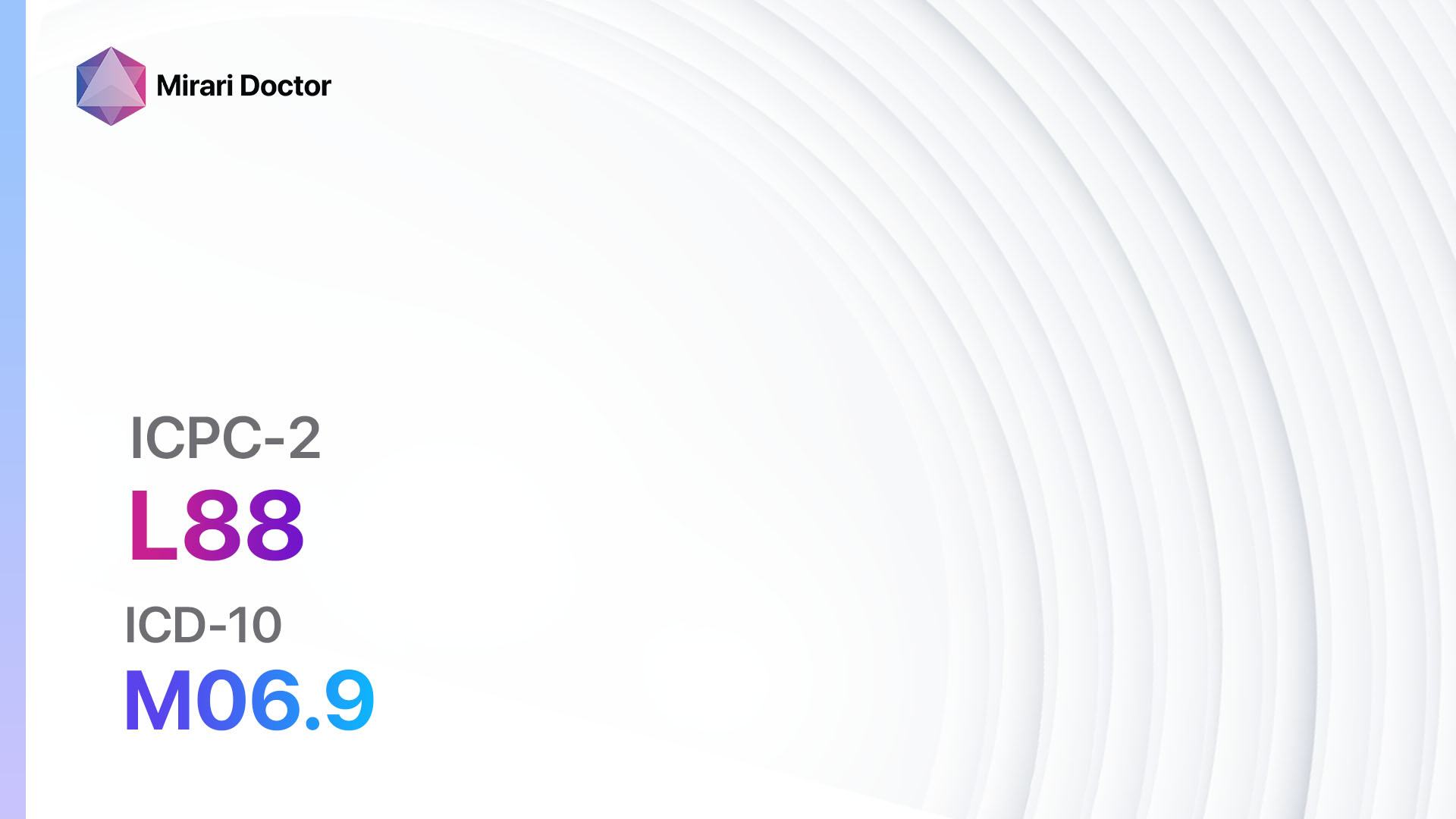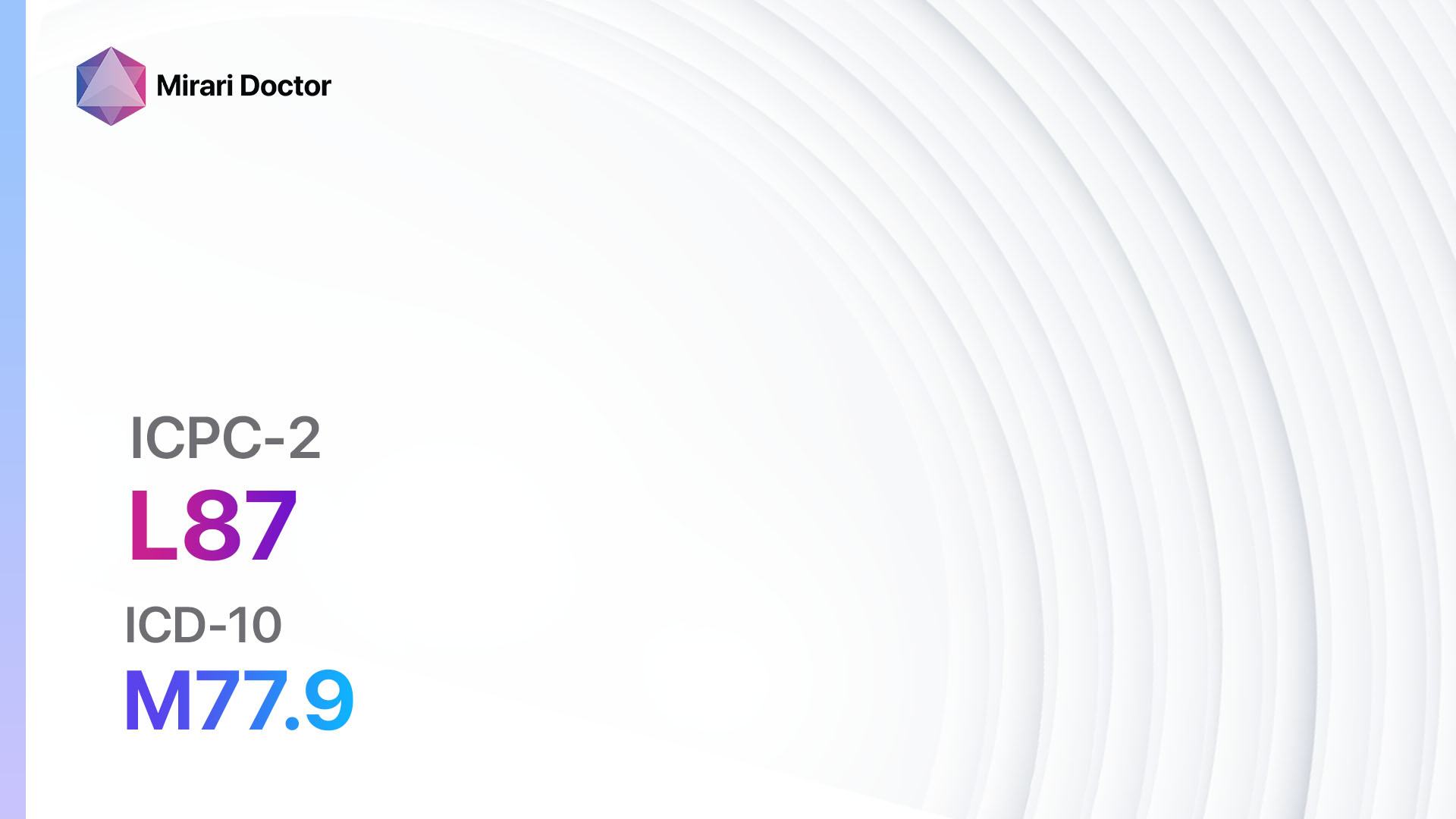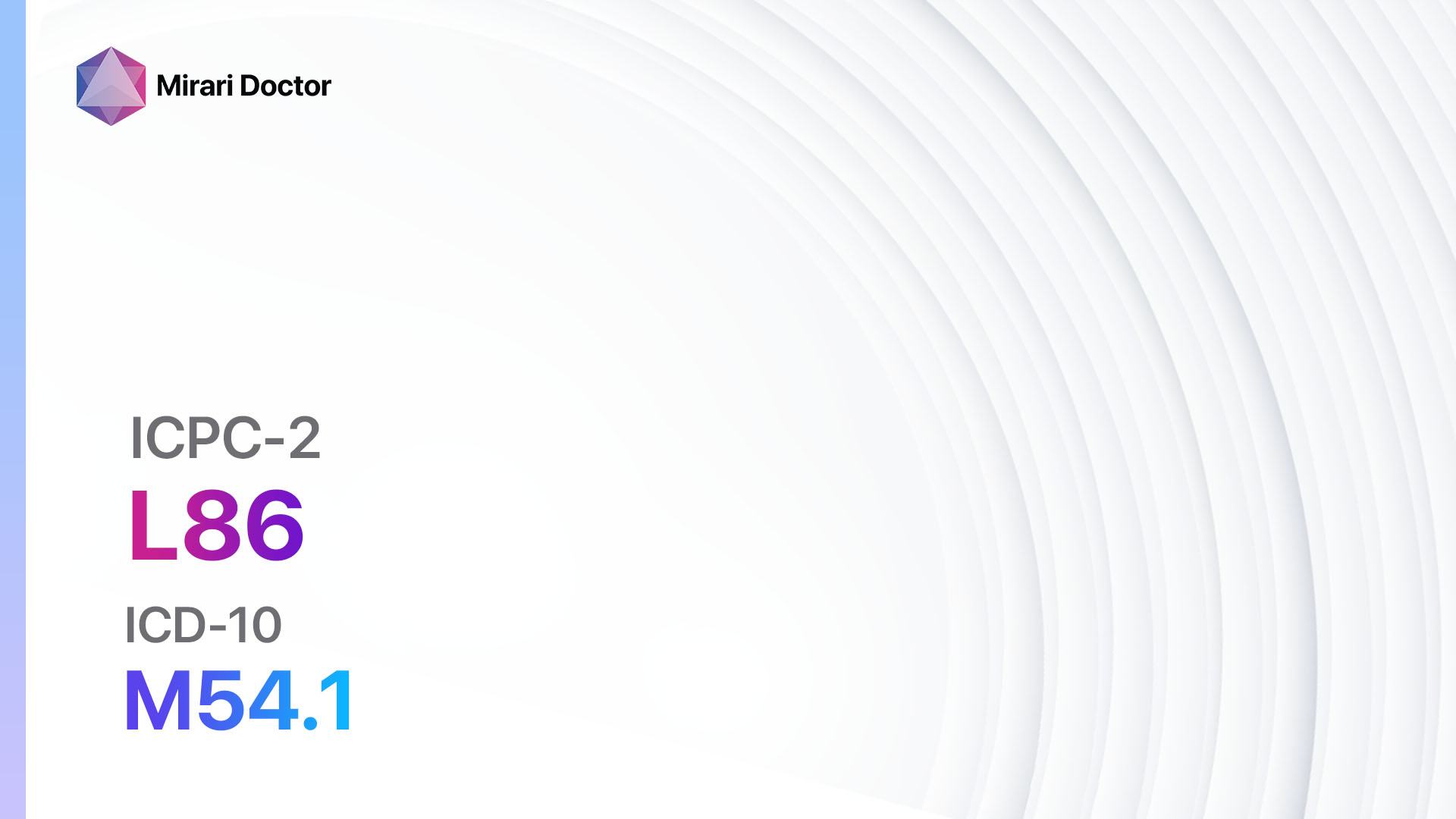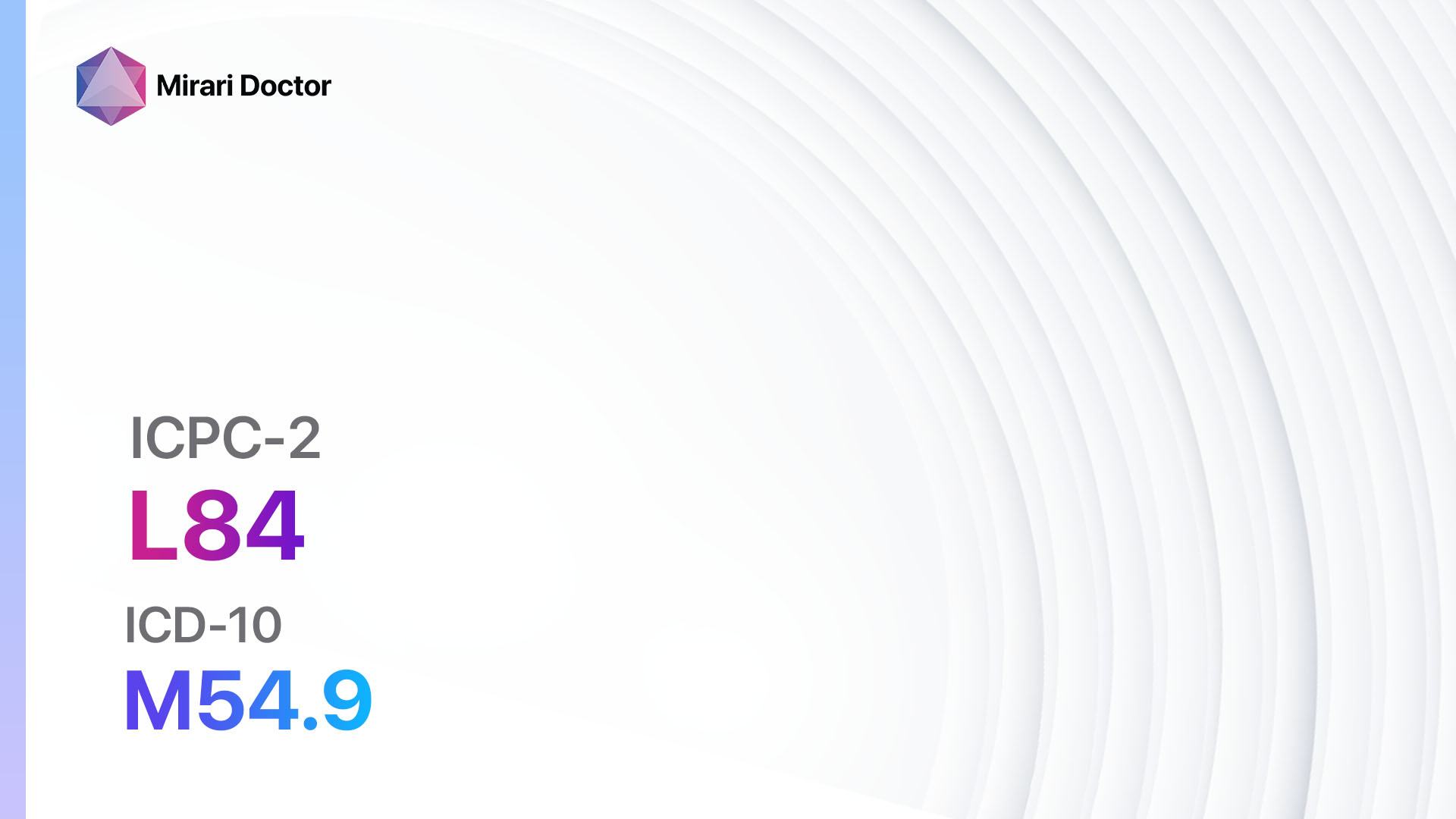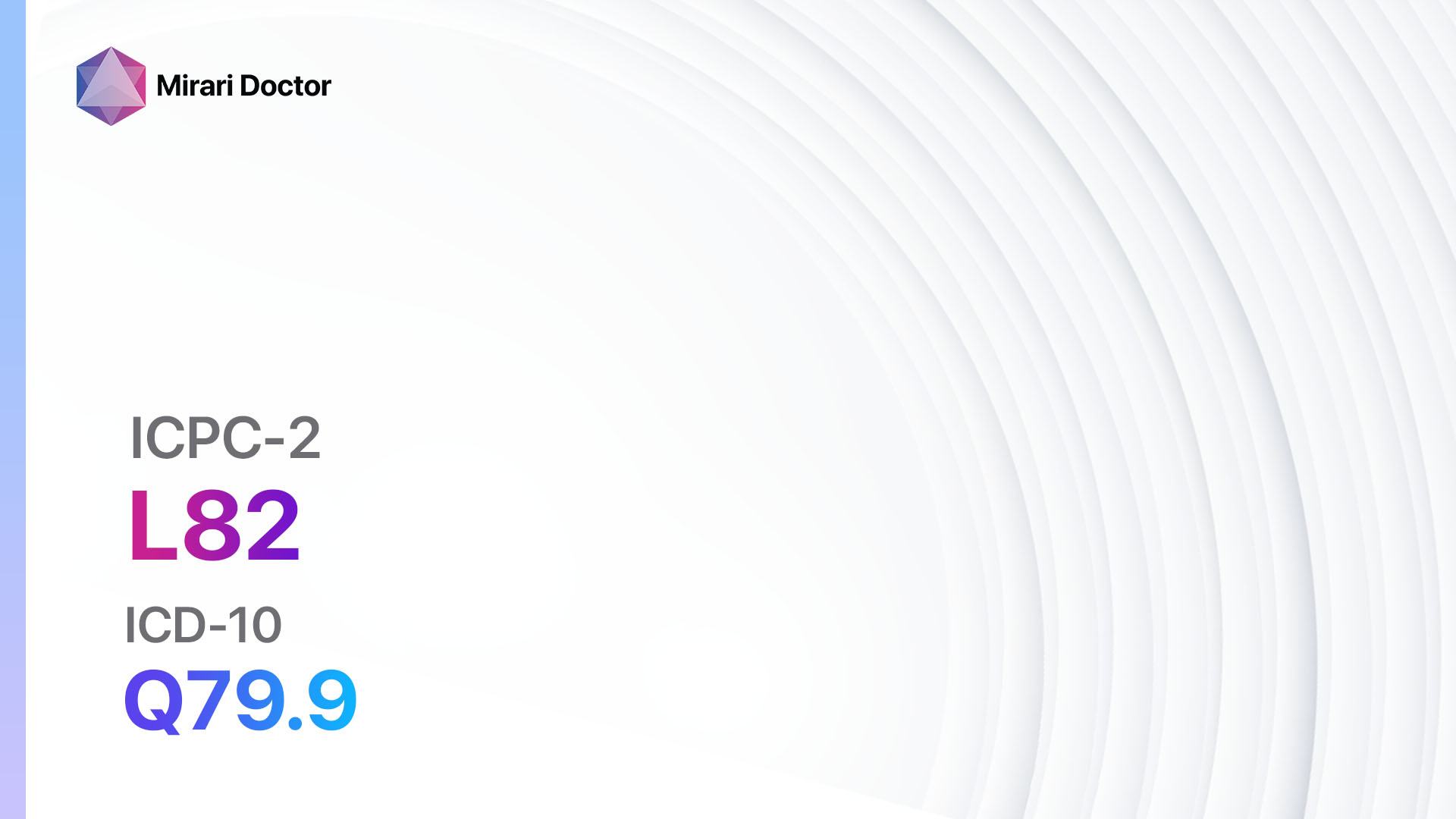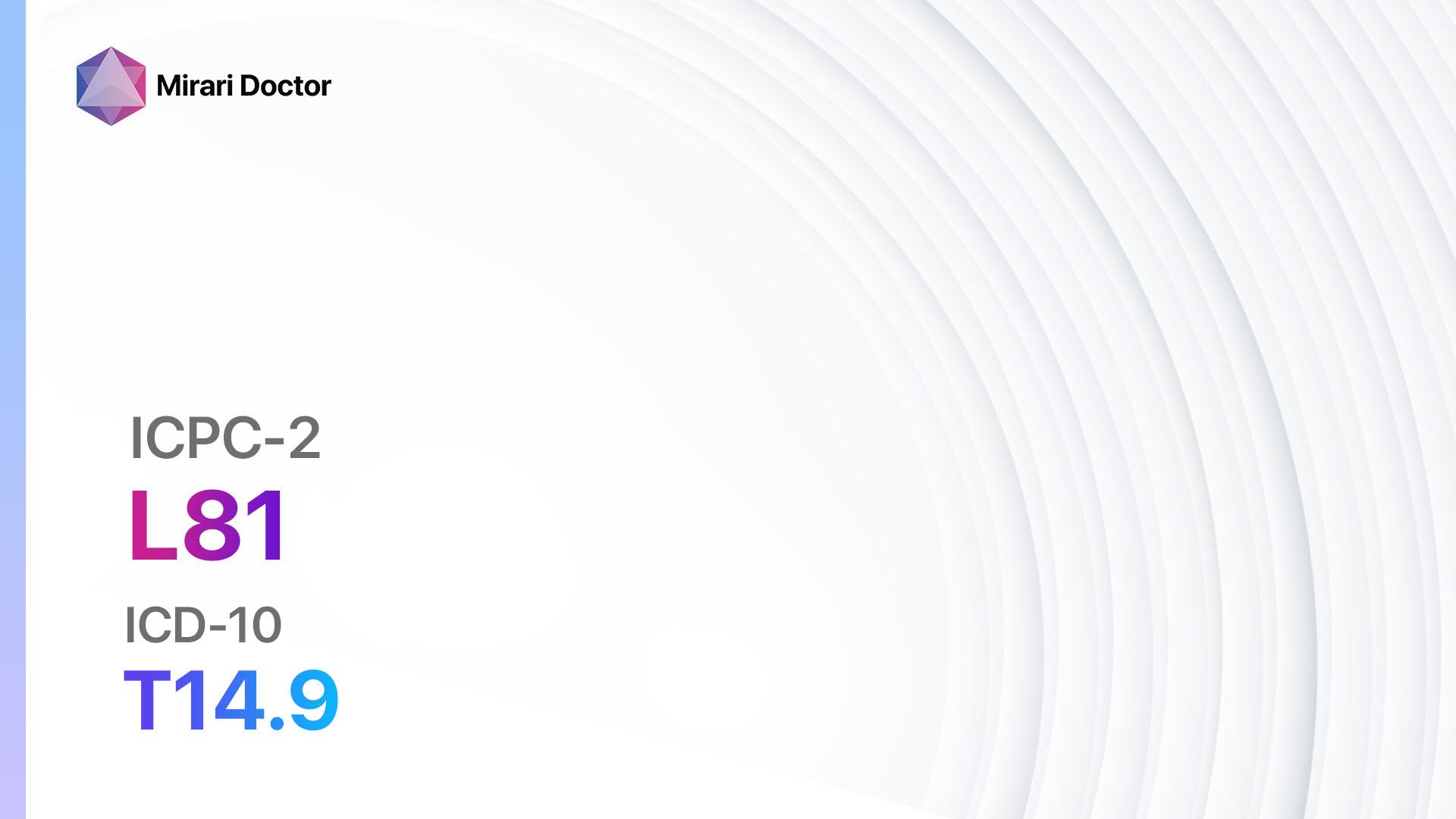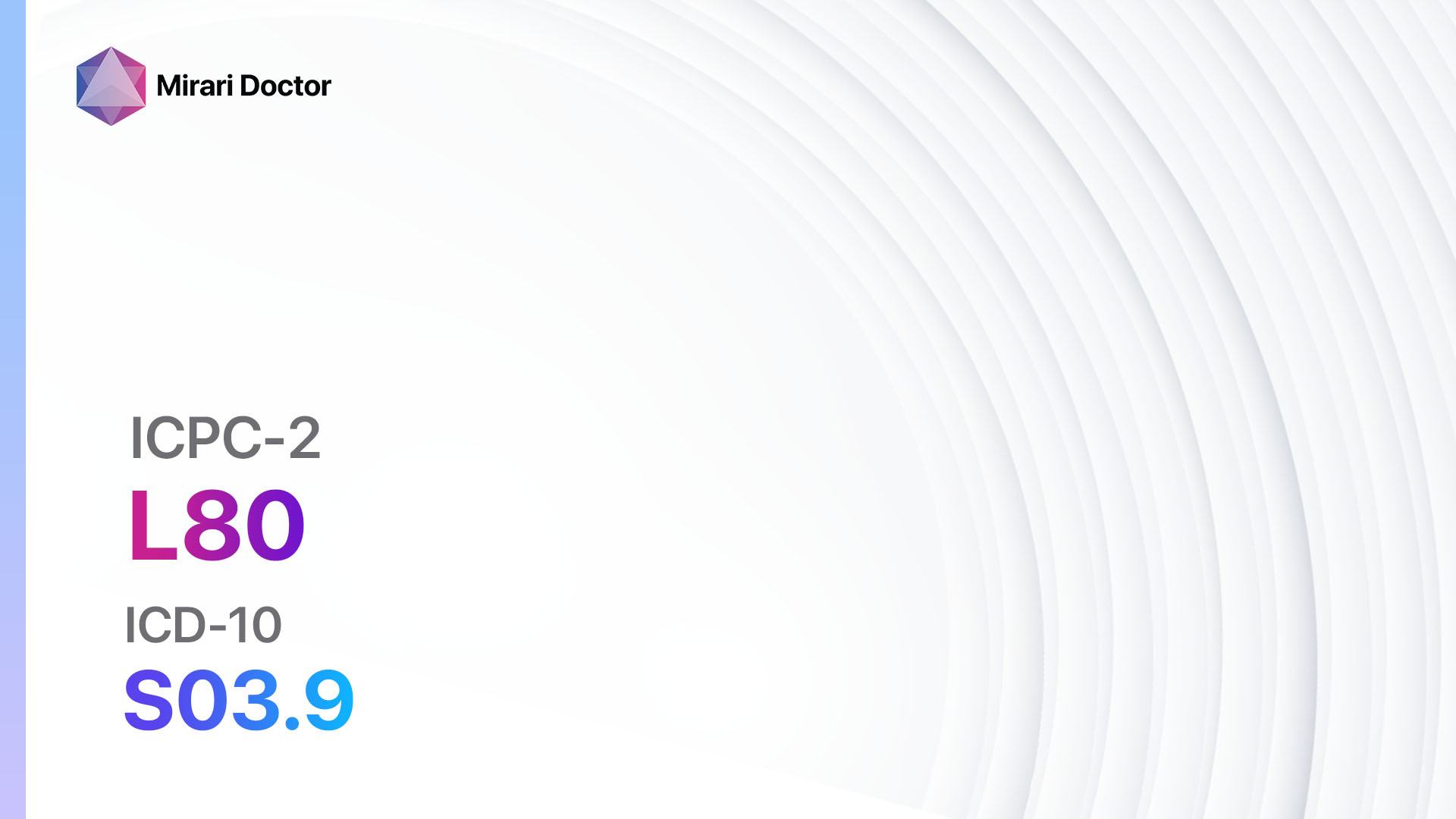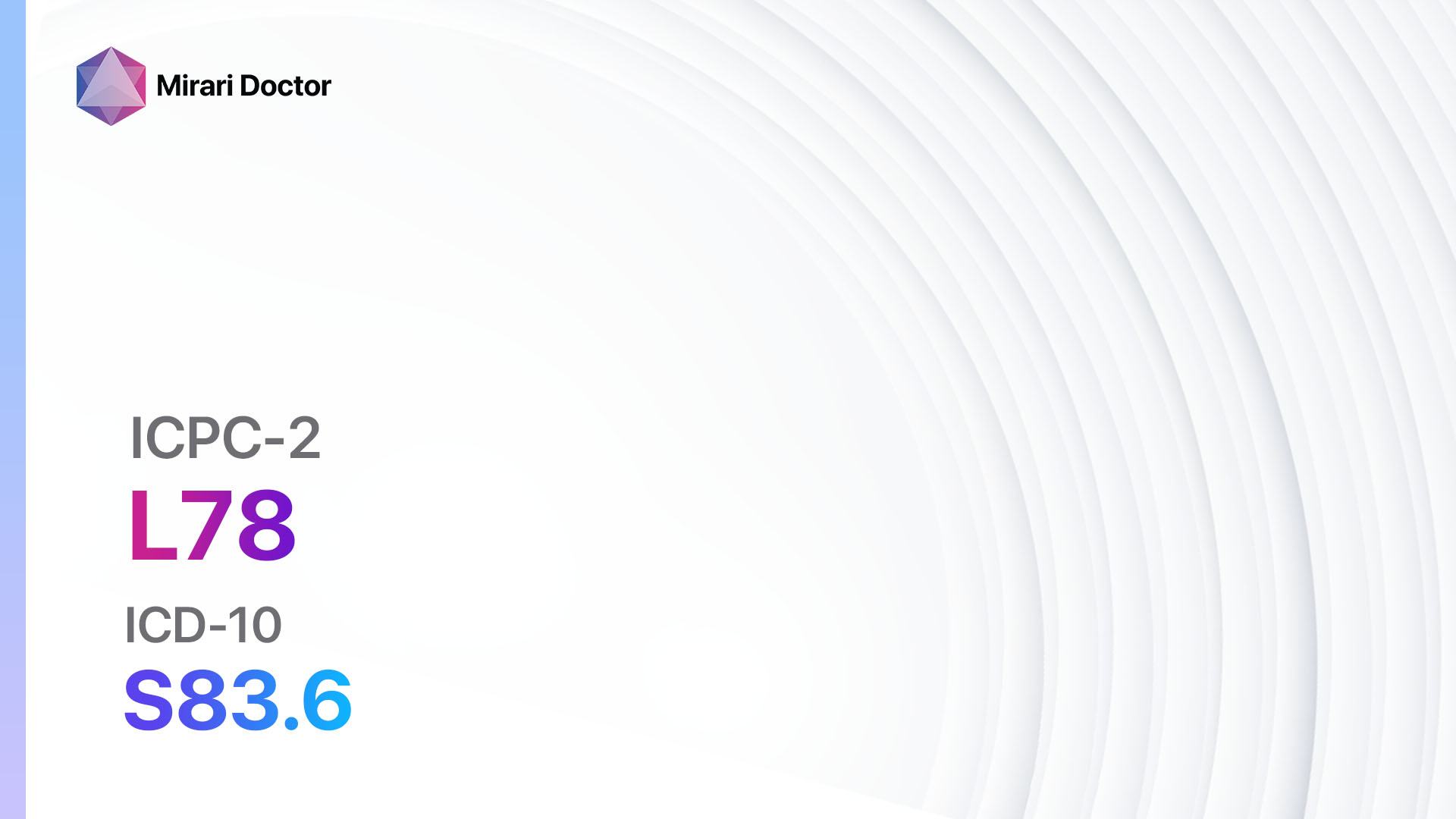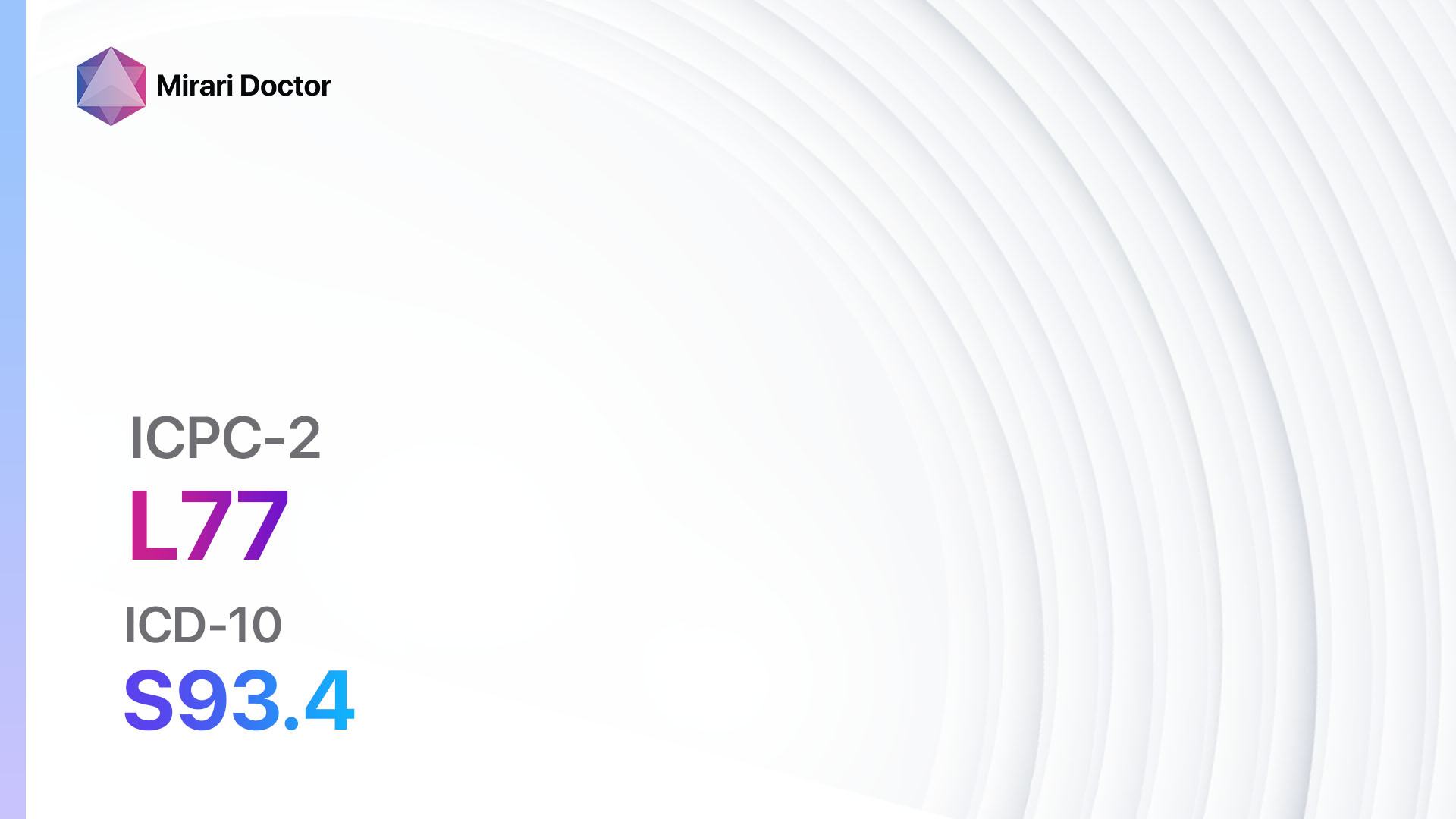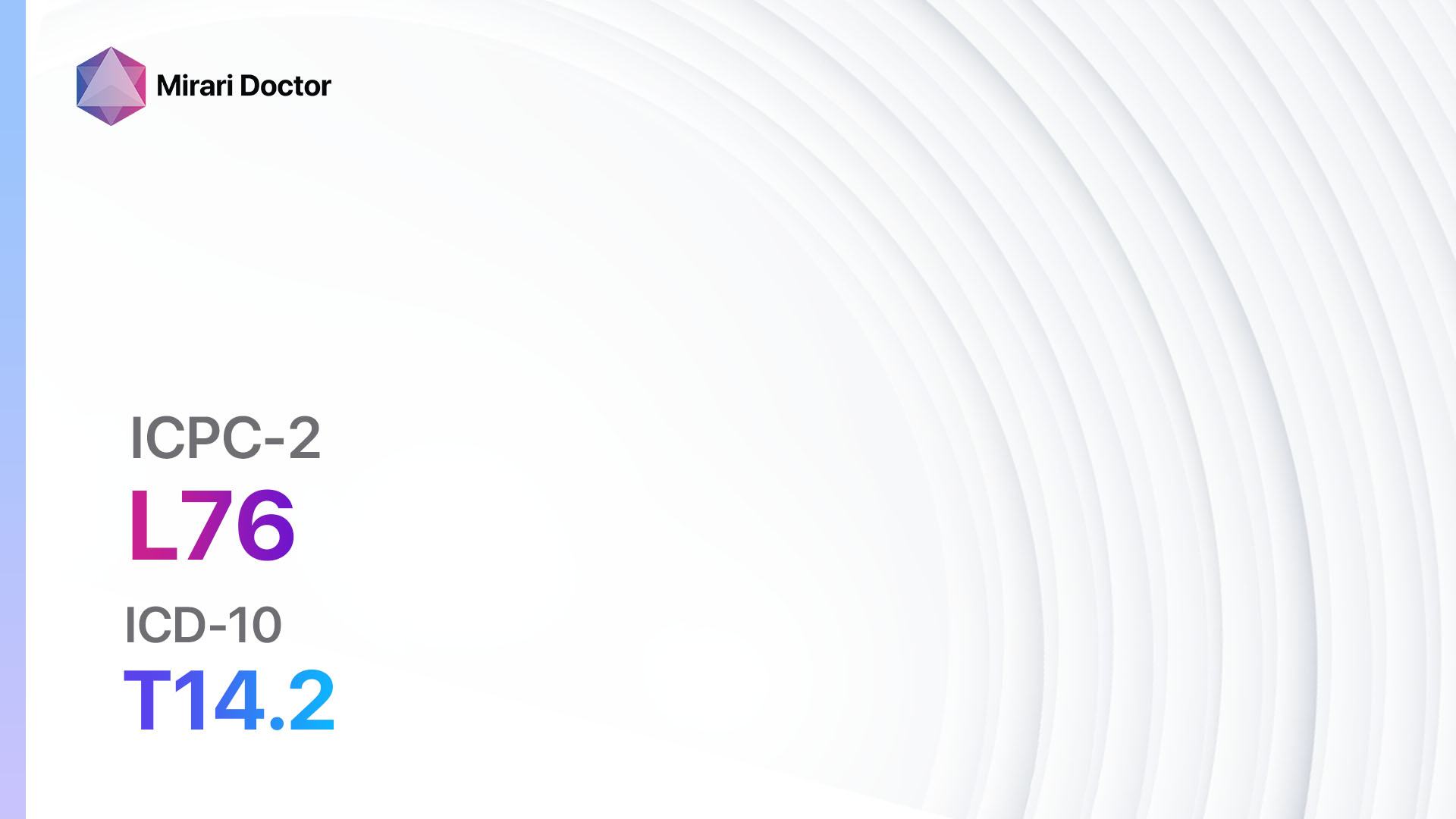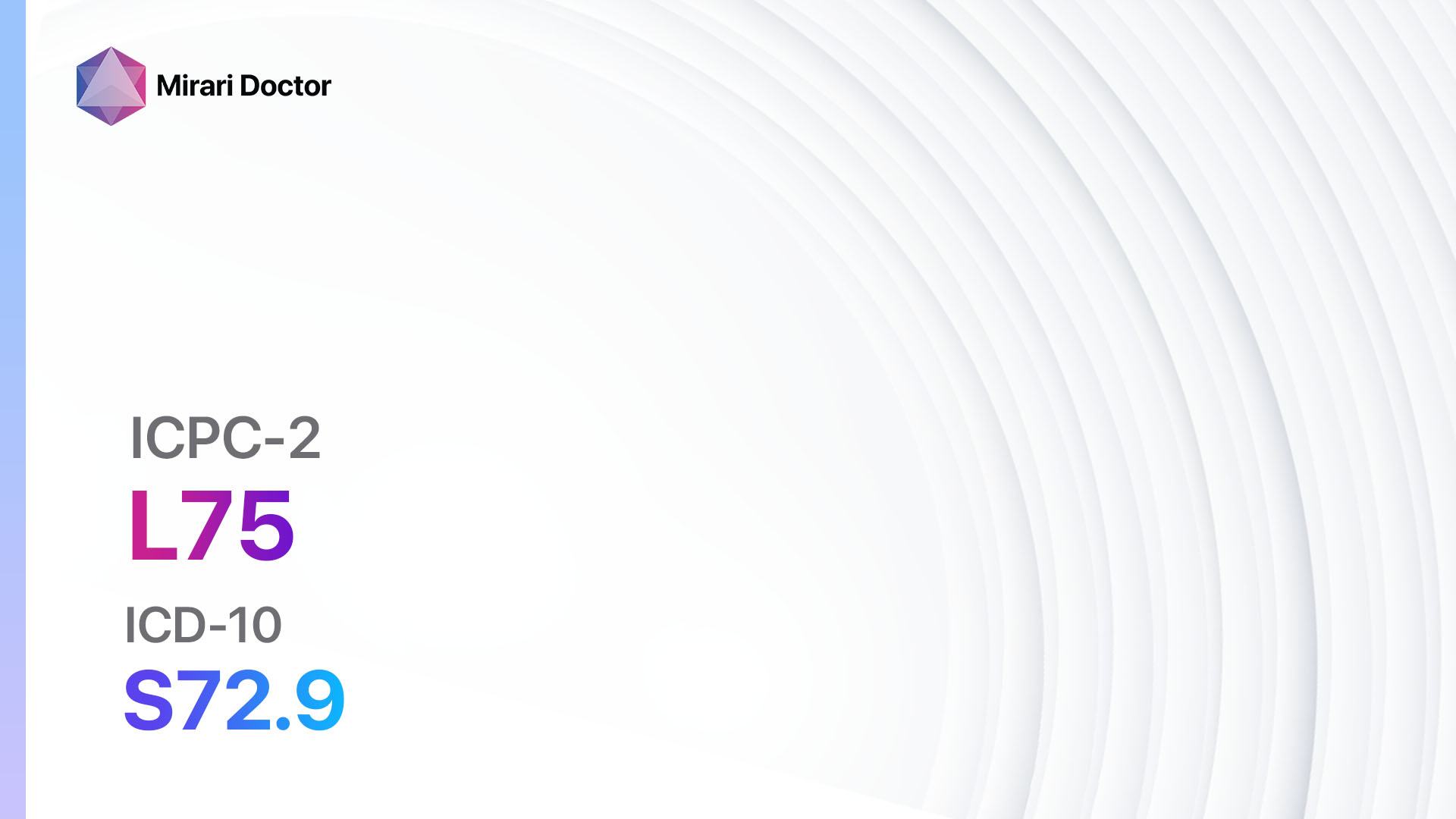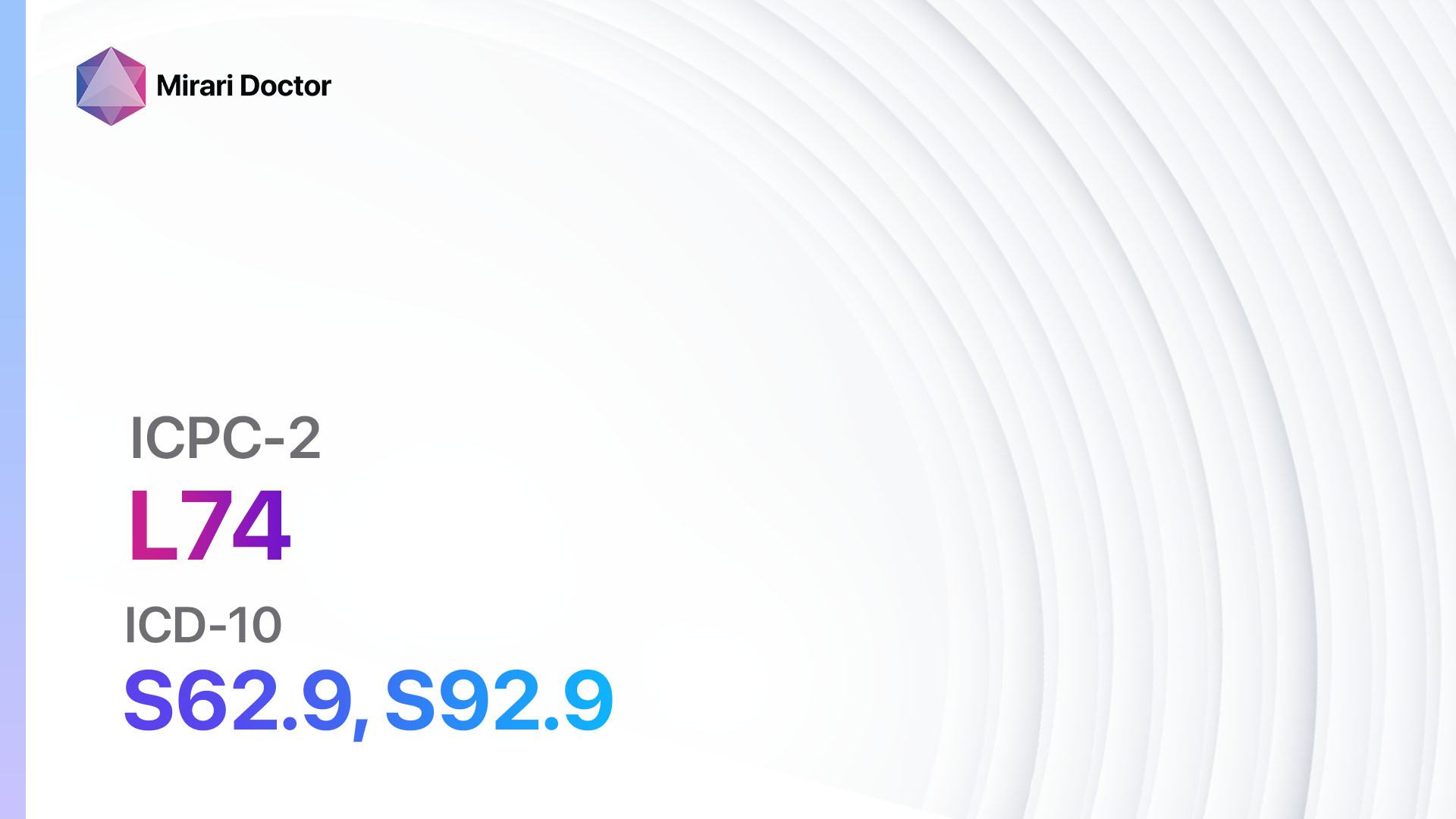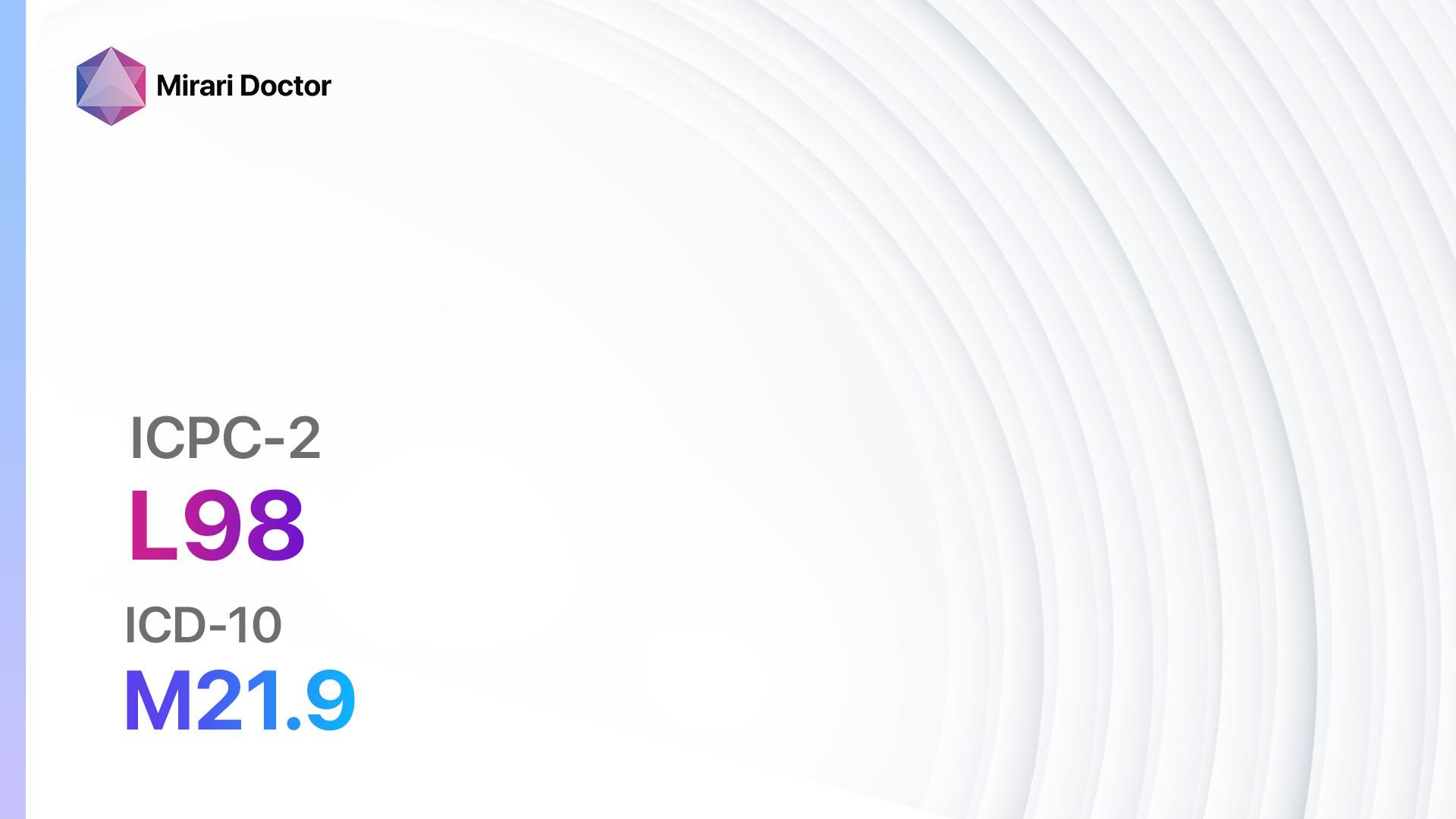
Introduction
Acquired deformity of limb refers to the abnormal shape or structure of a limb that develops after birth. This condition can significantly impact a person’s mobility and quality of life.[1] The aim of this guide is to provide healthcare professionals with a comprehensive overview of the diagnosis and management of acquired deformity of limb.
Codes
- ICPC-2 Code: L98 Acquired deformity of limb
- ICD-10 Code: M21.9 Acquired deformity of limb, unspecified[2]
Symptoms
- Pain: Patients may experience pain in the affected limb, especially during movement or weight-bearing.
- Swelling: Swelling may be present in the affected limb, particularly after prolonged activity.
- Limited range of motion: Patients may have difficulty moving the affected limb fully.
- Visible deformity: The limb may appear misshapen or have an abnormal alignment.
- Muscle weakness: Weakness in the muscles surrounding the affected limb may be present.[3]
Causes
- Trauma: Fractures, dislocations, or severe injuries to the limb can lead to acquired deformity.
- Infection: Certain infections, such as osteomyelitis or septic arthritis, can cause deformity in the affected limb.
- Tumors: Benign or malignant tumors in the bone or soft tissues of the limb can result in deformity.
- Neurological conditions: Conditions like cerebral palsy or stroke can lead to muscle imbalances and subsequent limb deformity.
- Arthritis: Chronic inflammation in the joints can cause joint destruction and deformity.[4][5]
Diagnostic Steps
Medical History
- Gather information about the patient’s medical history, including any previous injuries, infections, or underlying conditions.
- Ask about the onset and progression of symptoms, as well as any factors that worsen or alleviate the symptoms.
- Inquire about the patient’s occupation, hobbies, and activities that may contribute to the development of limb deformity.[6]
Physical Examination
- Perform a thorough physical examination of the affected limb, assessing for any visible deformities, swelling, or muscle atrophy.
- Evaluate the range of motion of the limb and assess for any joint instability or muscle weakness.
- Palpate the limb to identify any areas of tenderness or bony prominences.[7]
Laboratory Tests
- Complete blood count (CBC): To assess for signs of infection or inflammation.
- Erythrocyte sedimentation rate (ESR) and C-reactive protein (CRP): Elevated levels may indicate ongoing inflammation.
- Blood cultures: To identify any bacterial or fungal infections.
- Tumor markers: If a tumor is suspected, specific blood tests may be ordered to aid in diagnosis.[8]
Diagnostic Imaging
- X-rays: Provide detailed images of the bones and joints, allowing for the identification of fractures, dislocations, or bony abnormalities.
- CT scans: Useful for evaluating complex fractures, joint deformities, or soft tissue involvement.
- MRI: Provides detailed images of soft tissues, including muscles, tendons, and ligaments, helping to identify any abnormalities or damage.
- Ultrasound: Can be used to assess soft tissue structures, such as muscles, tendons, or blood vessels.[9]
Other Tests
- Electromyography (EMG): Measures the electrical activity of muscles and nerves, helping to identify any muscle or nerve dysfunction.
- Biopsy: If a tumor is suspected, a biopsy may be performed to obtain a tissue sample for further analysis.
- Genetic testing: In certain cases, genetic testing may be warranted to identify any underlying genetic abnormalities contributing to limb deformity.[10]
Follow-up and Patient Education
- Schedule regular follow-up appointments to monitor the progression of the deformity and assess the effectiveness of treatment.
- Provide education to the patient and their caregivers regarding the condition, treatment options, and strategies for managing symptoms.
- Encourage the patient to engage in physical therapy or rehabilitation programs to improve strength, range of motion, and functional abilities.
Possible Interventions
Traditional Interventions
Medications:
Top 5 drugs for Acquired deformity of limb:
- Nonsteroidal anti-inflammatory drugs (NSAIDs) (e.g., Ibuprofen, Naproxen):
- Cost: Generic versions can be $3-$20/month.
- Contraindications: History of gastrointestinal bleeding, renal impairment.
- Side effects: Upset stomach, gastrointestinal ulcers.
- Severe side effects: Kidney damage, cardiovascular events.
- Drug interactions: Anticoagulants, corticosteroids.
- Warning: Prolonged use may increase the risk of adverse effects.
- Muscle relaxants (e.g., Baclofen, Cyclobenzaprine):
- Cost: Generic versions can be $10-$50/month.
- Contraindications: History of hypersensitivity, liver disease.
- Side effects: Drowsiness, dizziness.
- Severe side effects: Severe allergic reactions, hallucinations.
- Drug interactions: Sedatives, alcohol.
- Warning: May cause drowsiness, caution while operating machinery or driving.
- Bisphosphonates (e.g., Alendronate, Risedronate):
- Cost: Generic versions can be $10-$50/month.
- Contraindications: Hypocalcemia, esophageal abnormalities.
- Side effects: Upset stomach, heartburn.
- Severe side effects: Osteonecrosis of the jaw, atypical fractures.
- Drug interactions: Calcium supplements, antacids.
- Warning: Should be taken with a full glass of water and remain upright for at least 30 minutes after administration.
- Corticosteroids (e.g., Prednisone, Dexamethasone):
- Cost: Generic versions can be $10-$50/month.
- Contraindications: Active infections, systemic fungal infections.
- Side effects: Increased appetite, weight gain.
- Severe side effects: Adrenal suppression, osteoporosis.
- Drug interactions: Nonsteroidal anti-inflammatory drugs (NSAIDs), anticoagulants.
- Warning: Prolonged use may lead to adrenal insufficiency.
- Disease-modifying antirheumatic drugs (DMARDs) (e.g., Methotrexate, Sulfasalazine):
- Cost: Generic versions can be $10-$50/month.
- Contraindications: Pregnancy, liver disease.
- Side effects: Nausea, diarrhea.
- Severe side effects: Bone marrow suppression, hepatotoxicity.
- Drug interactions: Nonsteroidal anti-inflammatory drugs (NSAIDs), immunosuppressants.
- Warning: Regular monitoring of liver function and blood counts is required.
Alternative Drugs:
- Physical therapy: A non-pharmacological intervention that focuses on improving strength, flexibility, and functional abilities. Cost: Varies depending on the location and duration of therapy.
- Orthotic devices: Custom-made braces or splints that help support and align the affected limb. Cost: $100-$500 per device.
- Surgical interventions: In severe cases, surgical correction of the deformity may be necessary. Cost: Varies depending on the specific procedure and location.
Alternative Interventions
- Acupuncture: May help reduce pain and improve blood flow. Cost: $60-$120 per session.
- Chiropractic care: Manipulative techniques aimed at improving joint alignment and function. Cost: $50-$200 per session.
- Massage therapy: Can help relax muscles, reduce pain, and improve circulation. Cost: $50-$100 per session.
- Herbal supplements: Some herbal supplements, such as turmeric or ginger, may have anti-inflammatory properties. Cost: Varies depending on the specific supplement.
- Yoga or Pilates: Exercises that focus on improving strength, flexibility, and body alignment. Cost: Varies depending on the location and duration of classes.
Lifestyle Interventions
- Weight management: Maintaining a healthy weight can help reduce stress on the affected limb. Cost: Varies depending on the chosen weight management program.
- Physical activity: Engaging in regular exercise, such as walking or swimming, can help improve strength and mobility. Cost: Varies depending on the chosen activity.
- Assistive devices: Using assistive devices, such as canes or walkers, can help improve mobility and reduce strain on the affected limb. Cost: Varies depending on the specific device.
- Proper footwear: Wearing supportive and well-fitting shoes can help improve stability and reduce discomfort. Cost: Varies depending on the chosen footwear.
- Heat or cold therapy: Applying heat or cold packs to the affected limb may help reduce pain and inflammation. Cost: Varies depending on the chosen therapy.
It is important to note that the cost ranges provided are approximate and may vary depending on the location and availability of the interventions.
Mirari Cold Plasma Alternative Intervention
Understanding Mirari Cold Plasma
- Safe and Non-Invasive Treatment: Mirari Cold Plasma is a safe and non-invasive treatment option for various skin conditions. It does not require incisions, minimizing the risk of scarring, bleeding, or tissue damage.
- Efficient Extraction of Foreign Bodies: Mirari Cold Plasma facilitates the removal of foreign bodies from the skin by degrading and dissociating organic matter, allowing easier access and extraction.
- Pain Reduction and Comfort: Mirari Cold Plasma has a local analgesic effect, providing pain relief during the treatment, making it more comfortable for the patient.
- Reduced Risk of Infection: Mirari Cold Plasma has antimicrobial properties, effectively killing bacteria and reducing the risk of infection.
- Accelerated Healing and Minimal Scarring: Mirari Cold Plasma stimulates wound healing and tissue regeneration, reducing healing time and minimizing the formation of scars.
Mirari Cold Plasma Prescription
Video instructions for using Mirari Cold Plasma Device – L98 Acquired deformity of limb (ICD-10:M21.9)
| Mild | Moderate | Severe |
| Mode setting: 2 (Wound Healing) Location: 0 (Localized) Morning: 15 minutes, Evening: 15 minutes |
Mode setting: 2 (Wound Healing) Location: 0 (Localized) Morning: 30 minutes, Lunch: 30 minutes, Evening: 30 minutes |
Mode setting: 2 (Wound Healing) Location: 0 (Localized) Morning: 30 minutes, Lunch: 30 minutes, Evening: 30 minutes |
| Mode setting: 9 (Arthritis) Location: 0 (Localized) Morning: 15 minutes, Evening: 15 minutes |
Mode setting: 9 (Arthritis) Location: 0 (Localized) Morning: 30 minutes, Lunch: 30 minutes, Evening: 30 minutes |
Mode setting: 9 (Arthritis) Location: 0 (Localized) Morning: 30 minutes, Lunch: 30 minutes, Evening: 30 minutes |
| Mode setting: 7 (Immunotherapy) Location: 1 (Sacrum) Morning: 15 minutes, Evening: 15 minutes |
Mode setting: 7 (Immunotherapy) Location: 1 (Sacrum) Morning: 30 minutes, Lunch: 30 minutes, Evening: 30 minutes |
Mode setting: 7 (Immunotherapy) Location: 1 (Sacrum) Morning: 30 minutes, Lunch: 30 minutes, Evening: 30 minutes |
| Total Morning: 45 minutes approx. $7.50 USD, Evening: 45 minutes approx. $7.50 USD |
Total Morning: 90 minutes approx. $15 USD, Lunch: 90 minutes approx. $15 USD, Evening: 90 minutes approx. $15 USD, |
Total Morning: 90 minutes approx. $15 USD, Lunch: 90 minutes approx. $15 USD, Evening: 90 minutes approx. $15 USD, |
| Usual treatment for 7-60 days approx. $105 USD – $900 USD | Usual treatment for 6-8 weeks approx. $1,890 USD – $2,520 USD |
Usual treatment for 3-6 months approx. $4,050 USD – $8,100 USD
|
 |
|
Use the Mirari Cold Plasma device to treat Acquired deformity of limb effectively.
WARNING: MIRARI COLD PLASMA IS DESIGNED FOR THE HUMAN BODY WITHOUT ANY ARTIFICIAL OR THIRD PARTY PRODUCTS. USE OF OTHER PRODUCTS IN COMBINATION WITH MIRARI COLD PLASMA MAY CAUSE UNPREDICTABLE EFFECTS, HARM OR INJURY. PLEASE CONSULT A MEDICAL PROFESSIONAL BEFORE COMBINING ANY OTHER PRODUCTS WITH USE OF MIRARI.
Step 1: Cleanse the Skin
- Start by cleaning the affected area of the skin with a gentle cleanser or mild soap and water. Gently pat the area dry with a clean towel.
Step 2: Prepare the Mirari Cold Plasma device
- Ensure that the Mirari Cold Plasma device is fully charged or has fresh batteries as per the manufacturer’s instructions. Make sure the device is clean and in good working condition.
- Switch on the Mirari device using the power button or by following the specific instructions provided with the device.
- Some Mirari devices may have adjustable settings for intensity or treatment duration. Follow the manufacturer’s instructions to select the appropriate settings based on your needs and the recommended guidelines.
Step 3: Apply the Device
- Place the Mirari device in direct contact with the affected area of the skin. Gently glide or hold the device over the skin surface, ensuring even coverage of the area experiencing.
- Slowly move the Mirari device in a circular motion or follow a specific pattern as indicated in the user manual. This helps ensure thorough treatment coverage.
Step 4: Monitor and Assess:
- Keep track of your progress and evaluate the effectiveness of the Mirari device in managing your Acquired deformity of limb. If you have any concerns or notice any adverse reactions, consult with your health care professional.
Note
This guide is for informational purposes only and should not replace the advice of a medical professional. Always consult with your healthcare provider or a qualified medical professional for personal advice, diagnosis, or treatment. Do not solely rely on the information presented here for decisions about your health. Use of this information is at your own risk. The authors of this guide, nor any associated entities or platforms, are not responsible for any potential adverse effects or outcomes based on the content.
Mirari Cold Plasma System Disclaimer
- Purpose: The Mirari Cold Plasma System is a Class 2 medical device designed for use by trained healthcare professionals. It is registered for use in Thailand and Vietnam. It is not intended for use outside of these locations.
- Informational Use: The content and information provided with the device are for educational and informational purposes only. They are not a substitute for professional medical advice or care.
- Variable Outcomes: While the device is approved for specific uses, individual outcomes can differ. We do not assert or guarantee specific medical outcomes.
- Consultation: Prior to utilizing the device or making decisions based on its content, it is essential to consult with a Certified Mirari Tele-Therapist and your medical healthcare provider regarding specific protocols.
- Liability: By using this device, users are acknowledging and accepting all potential risks. Neither the manufacturer nor the distributor will be held accountable for any adverse reactions, injuries, or damages stemming from its use.
- Geographical Availability: This device has received approval for designated purposes by the Thai and Vietnam FDA. As of now, outside of Thailand and Vietnam, the Mirari Cold Plasma System is not available for purchase or use.
References
- Sözen T, Özışık L, Başaran NC. An overview and management of osteoporosis. Eur J Rheumatol. 2017;4(1):46-56.
- World Health Organization. ICD-10 Version:2019. Accessed June 24, 2024. https://icd.who.int/browse10/2019/en
- Bunt CW, Jonas CE, Chang JG. Knee Pain in Adults and Adolescents: The Initial Evaluation. Am Fam Physician. 2018;98(9):576-585.
- Majewski M, Susanne H, Klaus S. Epidemiology of athletic knee injuries: A 10-year study. Knee. 2006;13(3):184-188.
- Calmbach WL, Hutchens M. Evaluation of patients presenting with knee pain: Part I. History, physical examination, radiographs, and laboratory tests. Am Fam Physician. 2003;68(5):907-912.
- Jackson JL, O’Malley PG, Kroenke K. Evaluation of acute knee pain in primary care. Ann Intern Med. 2003;139(7):575-588.
- Malanga GA, Andrus S, Nadler SF, McLean J. Physical examination of the knee: a review of the original test description and scientific validity of common orthopedic tests. Arch Phys Med Rehabil. 2003;84(4):592-603.
- Matheson GO, Clement DB, McKenzie DC, Taunton JE, Lloyd-Smith DR, MacIntyre JG. Stress fractures in athletes. A study of 320 cases. Am J Sports Med. 1987;15(1):46-58.
- Oei EH, Nikken JJ, Verstijnen AC, Ginai AZ, Hunink MG. MR imaging of the menisci and cruciate ligaments: a systematic review. Radiology. 2003;226(3):837-848.
- Lubowitz JH, Bernardini BJ, Reid JB 3rd. Current concepts review: comprehensive physical examination for instability of the knee. Am J Sports Med. 2008;36(3):577-594.
Related articles
Made in USA



